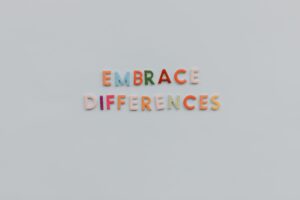Subscribe Now!
Subscribe to Our Newsletter To Enjoy Regular Mental Health Updates
Filter By Topics

Grief Processes
Last week, we navigated grief during the holidays, and this week we’re continuing the grief during the holidays series with a second installment on the grief process.
Grief is not linear, and while it is a universal experience, it does not manifest the same way in everyone. Even within one person, one experience of grief can manifest differently from another experience of grief. So, let’s delve a little deeper into the grief processes and how grief can manifest in our lives.

Navigating Grief During the Holidays
As we approach the holiday season, it’s essential to recognize that for many, this time of year can be challenging. Grief often intensifies during holidays as we grapple with the absence of loved ones. So as we approach the holidays, we want you to remember,
“You are not a grinch,
you’re in grief.”
-David Kessler

Active Listening
When we face difficult situations and emotions, we often turn to our loved ones and express ourselves. Sometimes they can help alleviate the heaviness of our emotions by simply lending an ear. But have you ever been asked too many questions, given advice that you did not want, or overlooked because they jumped to problem-solving your situation? When really, all you wanted was to let go of the pressing weight of the situation and feel understood and validated by them.
This week, we’re exploring active listening skills that we can use in our conversations to foster deeper connections.

Struggling to Create
Do you have bursts of creative energy that fizzle out with time? You can’t find the right medium to channel your creativity, or you can channel your creativity but quickly lose patience and drop it soon after you start.
Or, on the other hand, you have the skills. You know you can write stories or edit videos; you know you can be creative. But, no matter how passionate you are about your creativity, you just struggle to create.
This week, let’s look at how to maintain your creative energy and bring it to life, consistently.

Check In
As the days get shorter and the sun sets earlier, we’re reminded of the changing seasons. And for those who fell back with this past weekend’s Daylight Savings Time, it’s more than just the changing seasons impacting our routine—it’s the change of the clocks, externally and internally.
With this alteration in our daily rhythm, it’s an opportune moment to pause and consider how this transition might affect us personally.
So, how are you doing today? How are these changes in daylight hours affect your mood, energy, and productivity?

Autistic Stories
Autism is a spectrum, which means that every autistic individual has a different experience. This week, we’ll share some autistic individuals’ stories and how they describe their experience.

